
One of the popular arguments against mulching landscape and garden soils is that mulch delays soil warming and thus retards plant growth. Given that a well-chosen mulch will moderate temperature extremes – both hot and cold – is this an argument supported with evidence? In today’s post, I’m reporting the data I collected in visiting various parts of my home landscape and gardens and measuring soil temperatures.
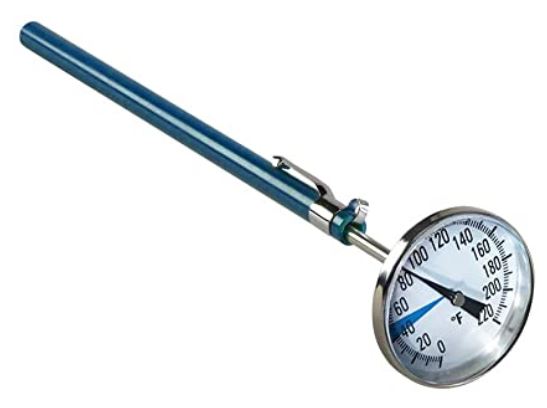
For measurements, I used a soil thermometer placed at the same depth in every soil tested. This required movement of mulch if mulch was present, so that thermometers were inserted completely into the soil. These thermometers read the entire length of the probe, so readings represent the average temperature in the top 5” of soil. I took close-up photos of each of the areas tested. I took 5 measurements for each location.

Bare mound in the sun 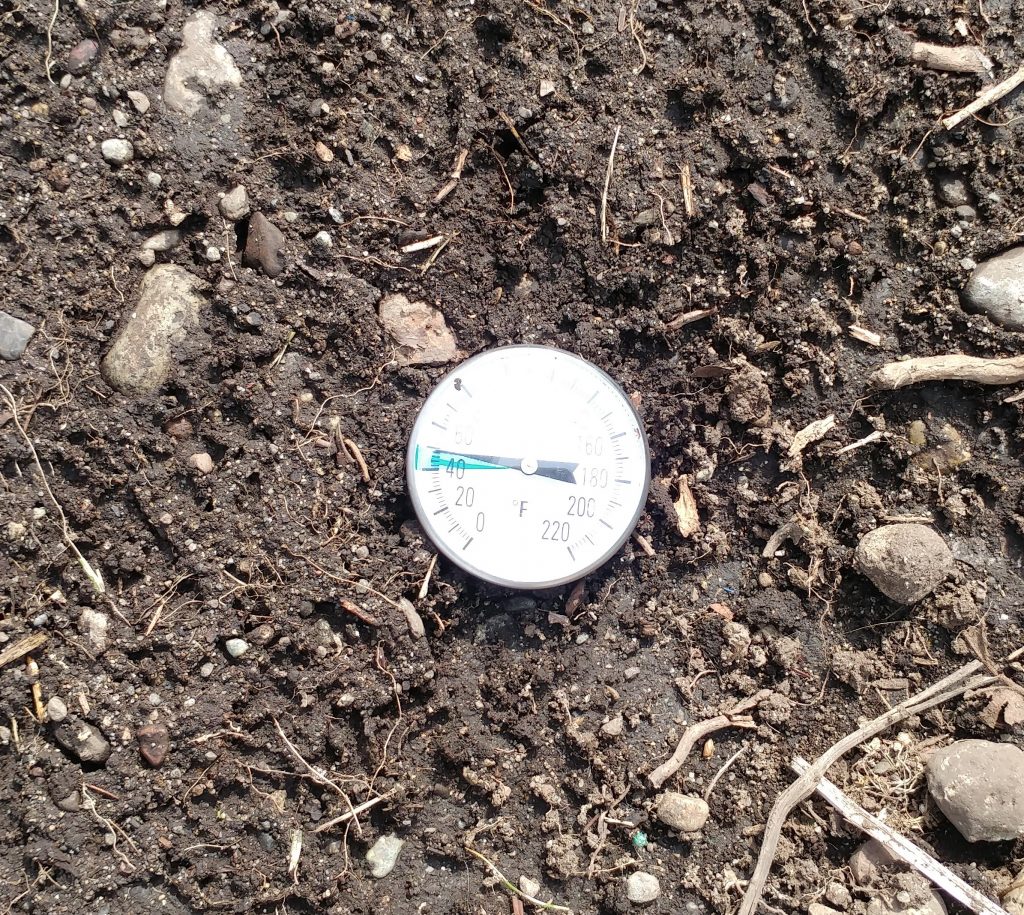
Bare soil in the sun 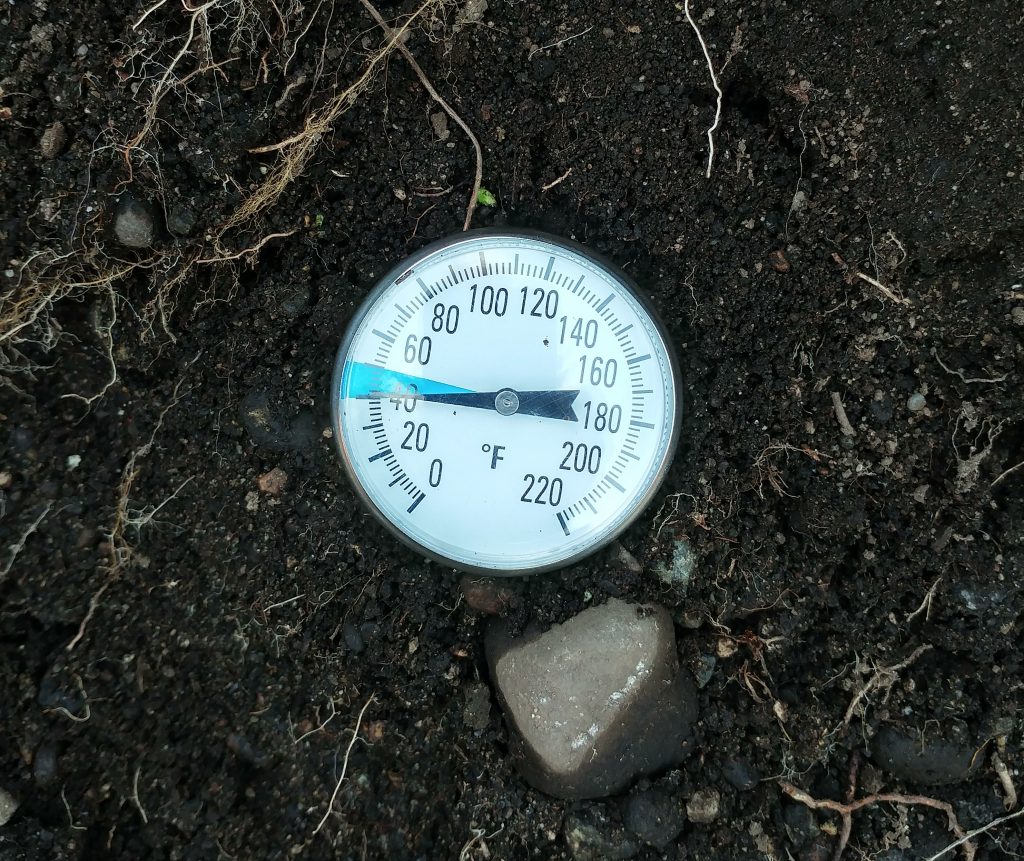
Bare soil in the shade 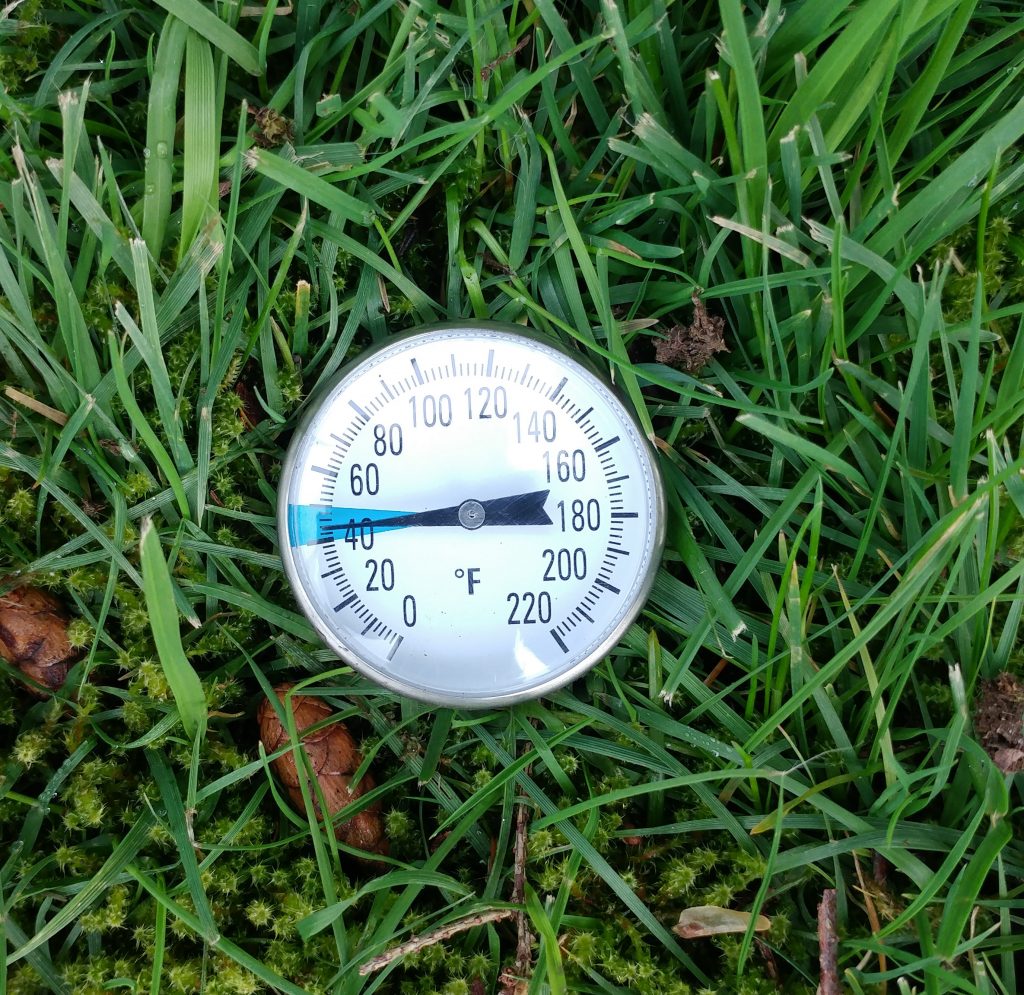
Turf in the sun 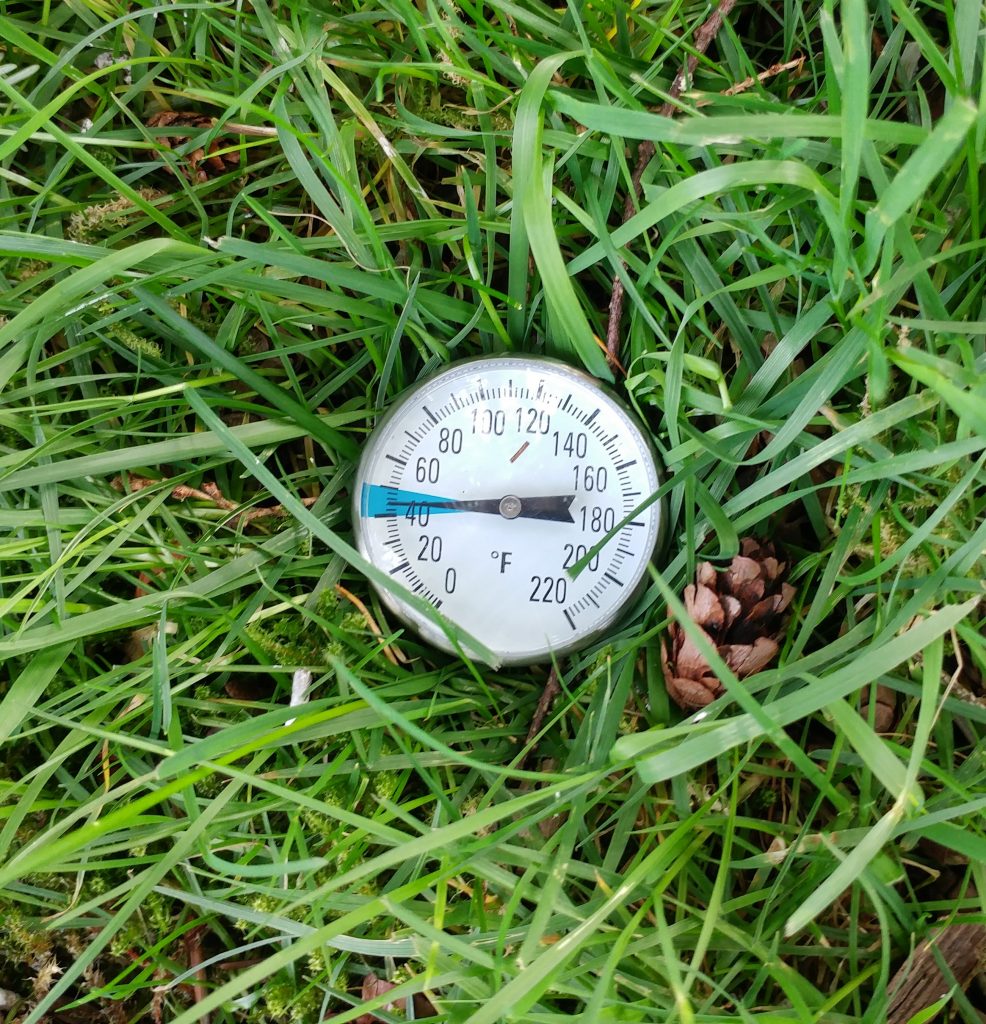
Turf in the shade 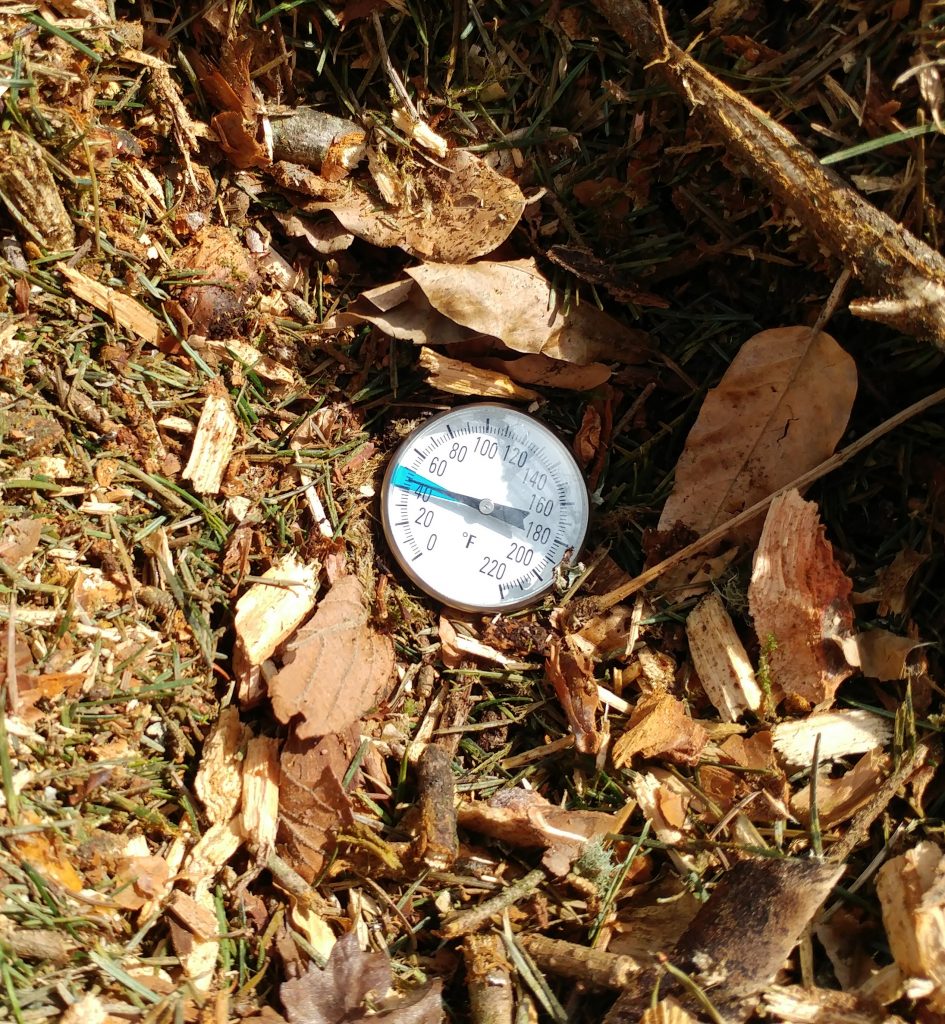
Newest mulch in bed 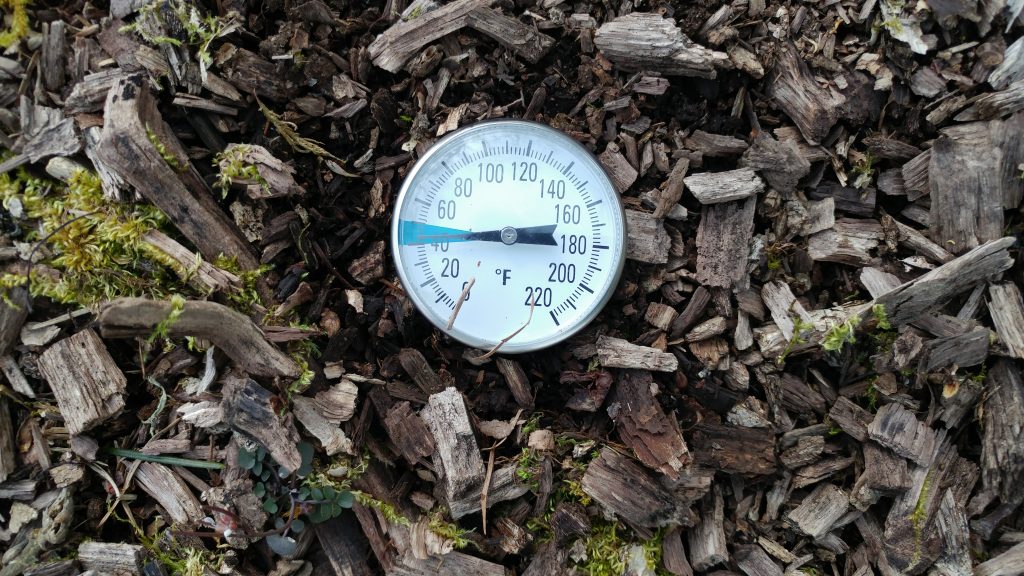
Older mulch in bed 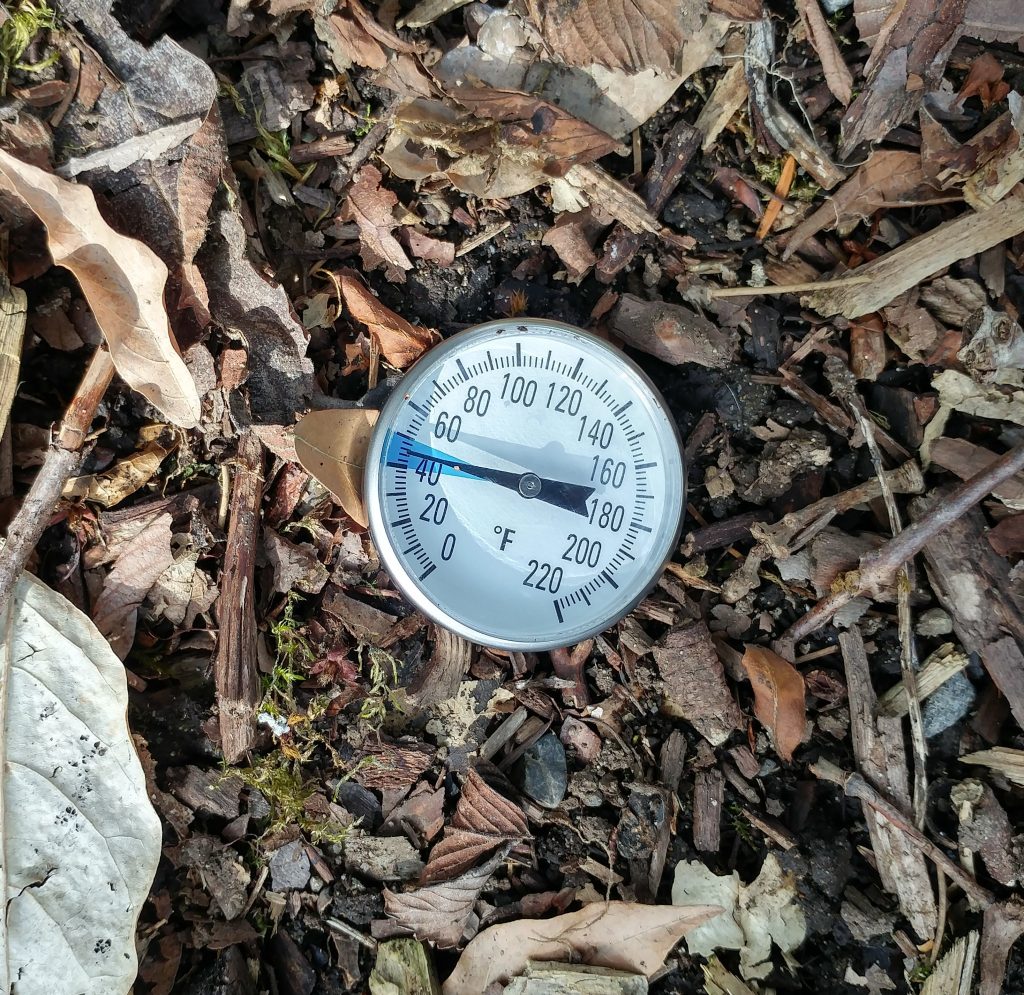
Unmulched soil in bed
Our evening temperatures have been near or below freezing, but the past several days have been sunny and the air temperatures are well into the 50F range. On March 17, it was 68F at 2 pm in the sun, though it was 27F that morning. The morning after (March 18), it was 35F.
There are several interesting trends to see on the box-and-whisker graph:
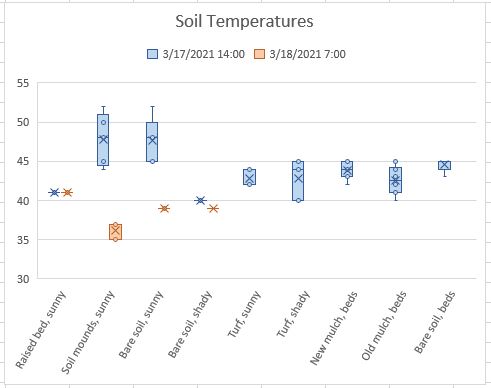
- Mulched raised beds have the most consistent temperatures, with no differences seen at any time or in any location measured.
- Unmulched soil mounds have extreme changes, mirroring air temperatures.
- Bare soil in beds under sunny conditions have extreme changes mirroring air temperatures, but not as great as that in raised beds. They are warmest during the day and coldest during the night.
- Bare soil in beds under shaded conditions are the coldest soils during the day and even colder at night.
- Soil under living mulch (turf) and beds with varying depths of wood chip are cooler during the day than bare soil in sunny conditions, but warmer at night.
- Bare soil in beds that were newly mulched are much warmer than bare soils not near mulched areas.
- The soil temperature under turf or in beds at least partially mulched did not change at night (data not shown on graph).
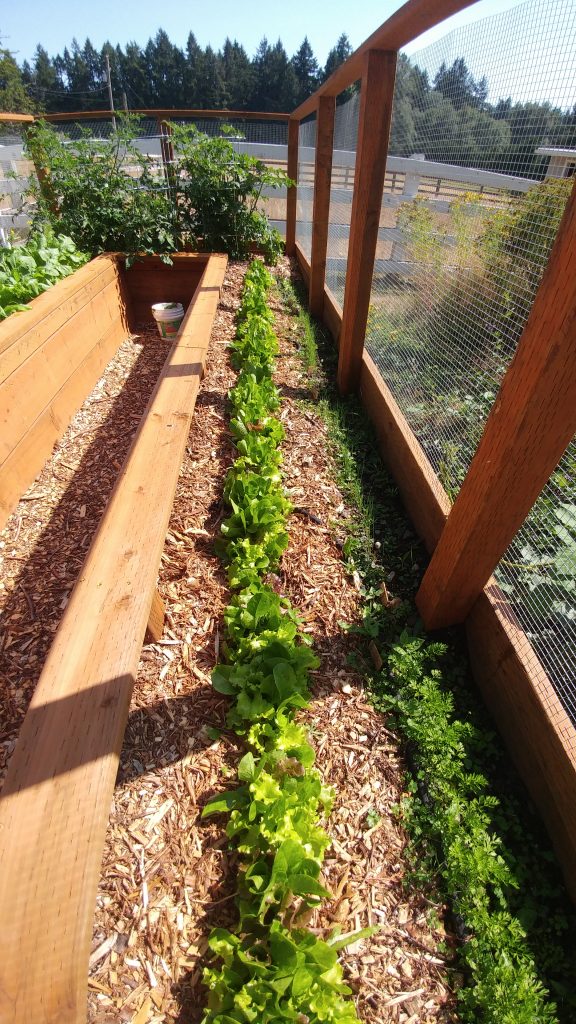
Raised beds – mulch only right now 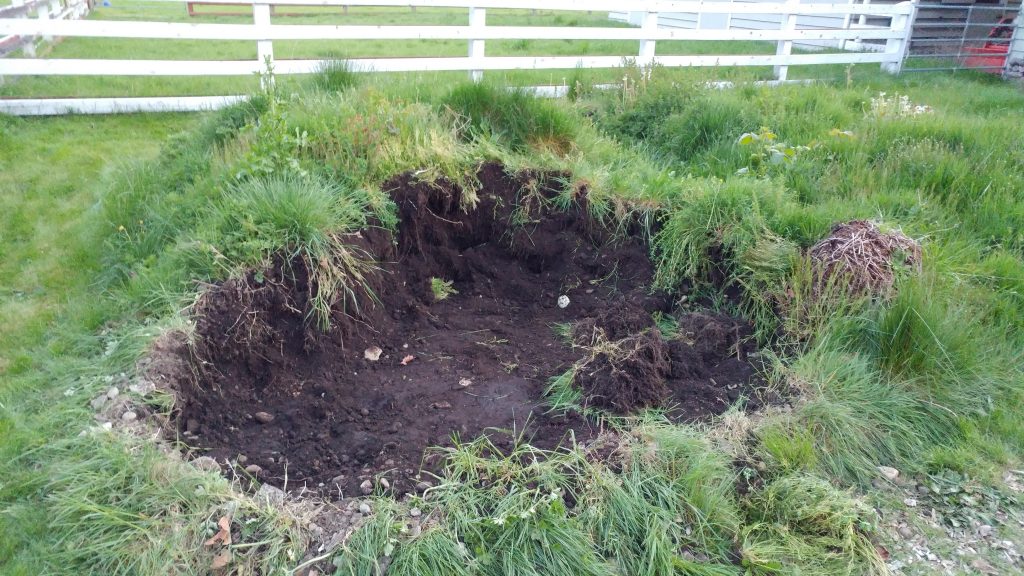
Mounded soil. Weeds were removed several months ago. 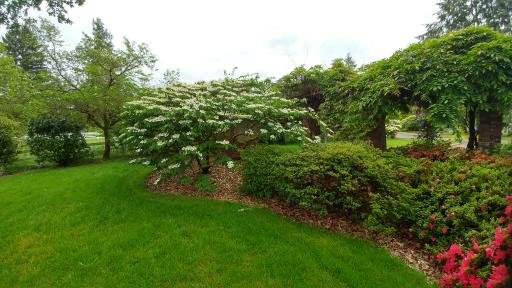
Mulched beds 
Turfed area, exposed to sun and shade
Extreme temperature swings can result in the death of germinating seeds, seedlings, expanding buds, and other tissues that aren’t cold hardy. This is especially true of tissues near the soil surface, where temperature are colder than they are at increased depths. Unprotected soil mounds show huge daily vacillations; comparative raised structures under mulch are cooler during the day but warmer at night. And bare soil in the shade is colder than any mulched soils. Consistency is important for young tissues, as they have few protections against environmental extremes.
What my little experiment demonstrates is what mulch research has consistently shown: appropriate mulch materials will moderate soil temperature extremes due to air temperature fluctuations. Just because a bare soil is 55F in the daytime doesn’t mean it won’t be 35F at night.
Great post!
Observing + Analyzing = Valuable Science
Thanks, Guy! In this case, it’s just confirming what published experimental research has shown for decades. It’s just nice to see it translates to home landscape and garden situations. as well.
Last fall I spread 2-3” hardwood wood chips over my dry shade flower garden. This spring I’d like to add compost. Can add compost over the chips or should I push them aside first? I’m concerned about water penetration since my site is so dry and is on an incline.
Why do you need to add compost? Have you done a soil test to find out how much organic matter your soil contains? Wood chips do create their own compost layer in any case. The worst thing you can do is create nutrient overloads with excessive organic matter. And you should maintain at least 4″ of chips to prevent weeds.
Hi Linda: Great post. Compost and mulch only way to go. Have a great day, talk again soon.
Ms. Chalker – Scott, you are my Guru. But, the 4 plus inches of arborist chips I placed down in several beds (tomatoes) are (not full of, but) very weedy. Before I would knock them back with the trimmer, but I can’t now without sending the chips flying. Oddly the beds that are mulched with salt hay are relatively free of weeds. Oh well………………you’re still my go – to for good info.
Side note: both Penn State University and “Gardener’s World” recommend cardboard layer mulch! The horror!
What kind of weeds are you seeing? If they were there before you put down the 4″ of chips, they can come back, especially herbaceous perennials and biennials. The best thing to do is use many (8-12″ inches) of chips to eliminate existing weeds. Then you can use a 4″ to eliminate new weed seed establishment.
Sorry for the hassle! Give this method another try.
They look like dactylis glomerata, or agropyron repens……….not sure. When I pull them up by hand they have an obnoxiously long taproot…..which usually breaks off.
Thanks for your reply, if you don’t mind – next I need to ask about adding sulfur to lower my soil pH. But I’ll save that for another time.
You’re the best!
Thank you.
Yes, deep taproots store a lot of resources. Use a much deeper mulch layer, and that will likely starve them out.
Good luck!
Hi Linda – I have a large expanse of buckthorn in many areas of our 3 acre property. We really don’t want to use the harsh chemicals to eradicate. Wondering if a thick layer of wood mulch of 8-10” deep would kill trimmed buckthorn stumps over time? These are definitely small stumps and lots of them!
If you trim and mulch deeply, it will kill the least vigorous. If any re-emerge, my suggestion is to clear the mulch, recut, and then paint glyphosate directly onto the stump itself. Then replace the mulch. We’ve done this successsfully and the spot painting of glyphosate means only the target plant is affected.
I recently had to teach a “Wake up your garden for spring” class at my nursery and spent a lot of time searching for all your articles on building beds with arborist wood chips! I think fall is better for building new beds but it was part of the class description so I quickly taled them through raised beds, solarization, sheet mulching, and using arborist wood chips, pointing out that even though many “garden writers” continue to promote lasagna gardening/sheet mulching,*based on current research* it was no longer recommended. By the way, just search online and that’s ALL that is recommended! Since you just debunked SuperThrive (yes! what a silly product) I thought maybe you could run an experiment to find out actually how long it takes for cardboard to decompose under the best conditions. Or maybe it’s been done already? Thanks – I’m a big fan of all of you!
There’s quite a bit of research on using corrugated cardboard in compost piles. It takes months for it to break down, and keep in mind that these are optimal conditions: shredded cardboard, sufficient moisture, oxygen, and heat. By extrapolation an entire sheet of cardboard, buried where oxygen levels are low, and often in cool temperatures is going to take much longer to degrade.
Hi Linda, I have a question about using arborist wood chips in fire-resistant landscapes. I have read in your “Using Arborist Wood Chips as Landscape Mulch” guidance document that coarse-textured organic mulches are not a fire hazard, but have also learned that many conifer species are fire-prone due to their thicker saps and resins. Are arborist chips made from pines, junipers, spruce’s, etc. potentially more flammable than arborist chips derived from hardwoods? Thanks!
Only mulches made from bark are flammable – they cannot absorb water, either. Wood chips, on the other hand, can absorb water and are much less flammable than bark, needles, and other water resistant materials.
I hope it is not too late to ask a question my ramial wood breaks down to a beautiful product that looks like coir or peat my soil near the house is this on builders top soil over fill with gray clay down about 14 ” would it improve new shrubs chances to remove some of this clay and mix it with the rest to improve nutrient retention I know it would mess up my no till but I have to dig for the root balls any way
That organic material is lovely but it is not soil. Do not remove your soil as it will only create textural barriers with the surrounding unamended soil. Leave it on top to be incorporated naturally.
Okay, I’m a newbie here striving to educate myself so I can do better for my land and ecology. I’m unable to source ‘arborist mulch’ but can find cypress mulch, or cedar mulch at one of my local nurseries—which of course offers shredded pine bark mulch. I know from reading your post about ‘bark’ not to go with that but is there a difference between cypress or cedar mulch? Is one better than the other? Curious? Trying to wade through all this info and ensure I fall into the camp of educated and actually making choices that help the landscape! Thanks for the clarity and insight. Best to you and yours!
Stephy, you will need to contact an arborist or tree service for a delivery of wood chips. This is not something that comes in a bag or a box. It is a fresh product full of living microbes. You can always look at ChipDrop online if you can’t find a local resource online.
Thanks for the additional resource! Got it! 🙂